
Cigar Aficionado is an American magazine that is dedicated to enjoying the “good life” and the world of cigars. Published since September 1992, the magazine is known for its profiles on celebrities including Michael Jordan, Jack Nicholson, The Rock, Demi Moore, Robert De Niro, Arnold Schwarzenegger, Usher, Nick Jonas, Tom Selleck, Hugh Jackman, Wayne Gretzky, Charles Barkley, and for its articles and blind tastings about handrolled, premium cigars, along with stories about golf, travel and luxury goods and experiences. The magazine was launched by Marvin R. Shanken's M. Shanken Communications, the publisher of Wine Spectator magazine since 1976. The current executive editor is David Savona.

Cohiba is a brand for two kinds of premium cigar, one produced in Cuba for Habanos S.A., the Cuban state-owned tobacco company, and the other produced in the Dominican Republic for US-based General Cigar Company. The name cohíba derives from the Taíno word for "tobacco".
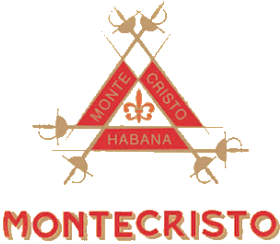
Montecristo is a brand of cigars and cigarettes produced separately and independently in Cuba by Habanos S.A., the national tobacco company, and in La Romana, Dominican Republic by Altadis, a subsidiary of British conglomerate Imperial Brands.

Bolívar is the name of two brands of premium cigar, one produced on the island of Cuba for Habanos SA, the Cuban state-owned tobacco company, and the other produced in the Dominican Republic from Dominican and Nicaraguan tobacco for General Cigar Company, which is today a subsidiary of Scandinavian Tobacco Group. Both are named for the South American revolutionary, Simón Bolívar.
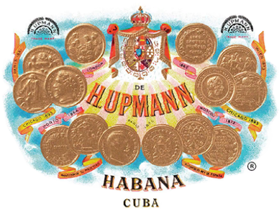
H. Upmann is a Cuban brand of premium cigars established by banker Hermann Dietrich Upmann. The brand is currently owned by a British corporation, Imperial Brands. The cigars are manufactured by Habanos S.A., the state-owned tobacco company in Cuba, and Altadis in La Romana, Dominican Republic.

Arturo Fuente is a cigar brand founded by Arturo Fuente, Sr. in 1912 in West Tampa, Florida. Following a catastrophic fire in 1924, the brand ceased production for 22 years, reemerging in 1946 on a limited, local basis. Ownership was transferred to Arturo's younger son, Carlos Fuente, Sr. in 1958. Following the 1960 United States embargo of Cuba, the Fuente brand began a period of slow and steady growth, emerging as one of the most critically acclaimed makers of hand-rolled premium cigars outside of Cuba. As of 2010, the company was producing 30 million cigars per annum from its factory in the Dominican Republic.

Trinidad is a Cuban brand of cigars, named after the city of Trinidad, Cuba.The production plants are located in Cuba, managed by the Cuban manufacturing company Habanos S.A., and in the Dominican Republic, by the Spanish manufacturing company Altadis, a subsidiary of the British tobacco company Imperial Brands.
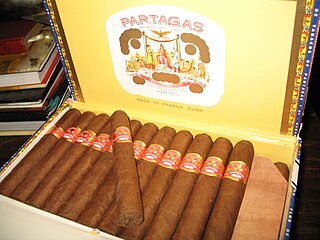
Partagás is the brand name of two lines of cigars made by two independent & competing entities, one produced on the island of Cuba for Habanos SA, the Cuban state-owned tobacco company; the other, containing no Cuban tobacco, produced in the Dominican Republic for General Cigar Company, a division of Scandinavian Tobacco Group of Denmark.

Punch is the name of two brands of cigars, one produced on the island of Cuba for Habanos SA, the Cuban state-owned tobacco company, and the other produced in Honduras for General Cigar Company.
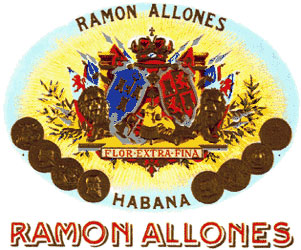
Ramón Allones is the name of two premium cigar brands. The first one is produced on Cuba for Habanos SA, the Cuban state-owned tobacco company. The other is produced in Honduras for General Cigar Company, now a subsidiary of Swedish Match.

Por Larrañaga is the name of a cigar brand produced in Cuba for Habanos S.A., the Cuban state-owned tobacco company, as well as a non-Cuban line of cigars produced in the Dominican Republic and Honduras for Altadis, a subsidiary of Imperial Brands. Por Larrañaga cigars have been in continuous production in Cuba since 1834.
Ernesto Padilla is a Cuban-American artist, graphic designer and cigar maker. He is the son of Cuban poet, Heberto Padilla.
Andre Garcia is a luxury leather product and cigar brand owned by brothers, Abhik Roy and Anindya Roy.

Piloto Cigars Inc. is a private company that produces the Padrón cigar brand from Nicaragua. Commonly known as Padrón Cigars, the company was founded in September 8, 1964, in Miami, Florida, by Cuban-native José Orlando Padrón. In 1970, Padrón moved the company to Estelí, Nicaragua.
Oliva Cigar Co. is the manufacturer of several brands of cigars primarily grown and produced in Nicaragua and sold internationally. Melanio Oliva began growing tobacco in Pinar del Río, Cuba, in 1886. In 1964, in the aftermath of the 1959 Cuban Revolution, Melanio's grandson Gilberto Oliva emigrated with his family to Spain before eventually moving to Nicaragua and re-entering the tobacco business. In 1995, Gilberto and his son, Gilberto Jr., launched the Gilberto Oliva brand, which became Oliva Cigar Co. The company is currently based in Miami Lakes, Florida.

Tabacalera Fernandez, best known to the English-speaking world as A.J. Fernandez Cigars, is a maker of cigars primarily grown and produced in Nicaragua and sold worldwide. The company is run by Abdel J. Fernandez, a third generation cigarmaker, and is a prominent manufacturer of cigars sold under a variety of labels, including "Man O'War," "Diesel," and "San Lotano".
Nestor Plasencia Sr. is a tobacco grower and cigar maker of Cuban descent whose factories in Honduras and Nicaragua produce over 30 million cigars a year. Contracting out the use of his factories to Rocky Patel and other leading brands, Plasencia remains one of the leading figures in the Central American cigar industry.
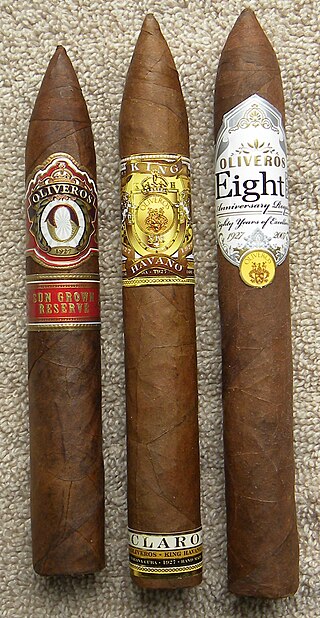
Boutique Blends Cigars, formerly the Habana Cuba Cigar Company, is an American manufacturer of premium hand-rolled cigars based in Miami, Florida. The company was established in 1996 during the American cigar boom as the non-Cuban manufacturer of the historic Cuban "Oliveros" brand. The company was sold in 2002 to a new ownership group consisting of the Cuban-born Rafael Nodal, his wife Alina Cordoves Nodal, and Hank Bischoff.
Maya Selva is a Honduran cigar maker and tobacco grower.














